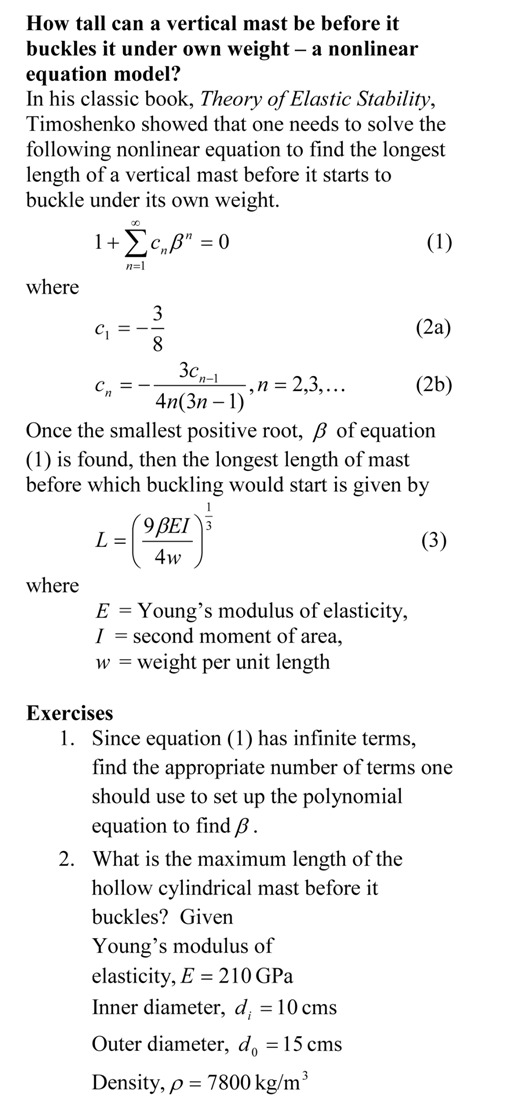
_______________________________________________
This post is brought to you by Holistic Numerical Methods: Numerical Methods for the STEM undergraduate at http://nm.mathforcollege.com, the textbook on Numerical Methods with Applications available from the lulu storefront, and the YouTube video lectures available at http://nm.mathforcollege.com/videos and http://www.youtube.com/numericalmethodsguy
Subscribe to the blog via a reader or email to stay updated with this blog. Let the information follow you.
Autar – Coincidentaly I have just been looking at column buckling on my blog, using a Runge-Kutta approach:
http://newtonexcelbach.wordpress.com/2010/06/19/elegant-solutions-column-buckling-and-the-hole-through-the-middle-of-the-earth/
For a point load at the top of the column I get exactly the same result as the Euler buckling equation (within machine accuracy), but applying it to a uniform column under self weight I get a slightly different answer to the equation you posted (about 7.2% less). Do you know of a freely available derivation of the Timoshenko equation?
Doug Jenkins
The self-weight and applying the point load to the top of column are two different problems. This is because the load on the top problem results in a reaction equal to the applied load at any cross-section. The self-weight problem reaction at any cross-section increases from zero at the top to the full weight at the bottom.
I am not aware of a freely available derivation of the Timoshenko equation.
The self-weight and applying the point load to the top of column are two different problems. This is because the load on the top problem results in a reaction equal to the applied load at any cross-section. The self-weight problem reaction at any cross-section increases from zero at the top to the full weight at the bottom.
I am not aware of a freely available derivation of the Timoshenko equation.
[quote] The self-weight problem reaction at any cross-section increases from zero at the top to the full weight at the bottom.
[/quote]
Yes, I allowed for that. I’ll look into it further when I have time and let you know if it is me or Timoshnko that has got it wrong!
Ever spend hours working on something and end up with something so obvious you can’t understand why you didn’t do it that way in the first place?
Anyway, you will be glad to know that the Runge-Kutta solution to the self-buckling problem gives exactly the same answer as the Timoshenko equation (when you do it properly). I’ll post details on my blog when I have time.